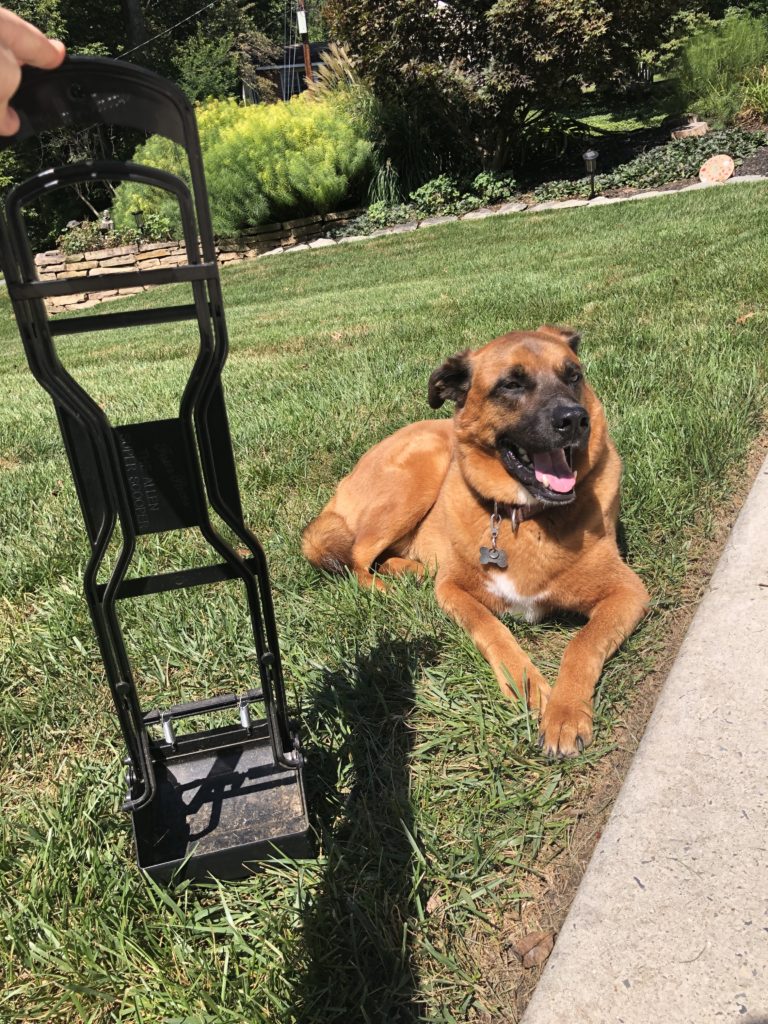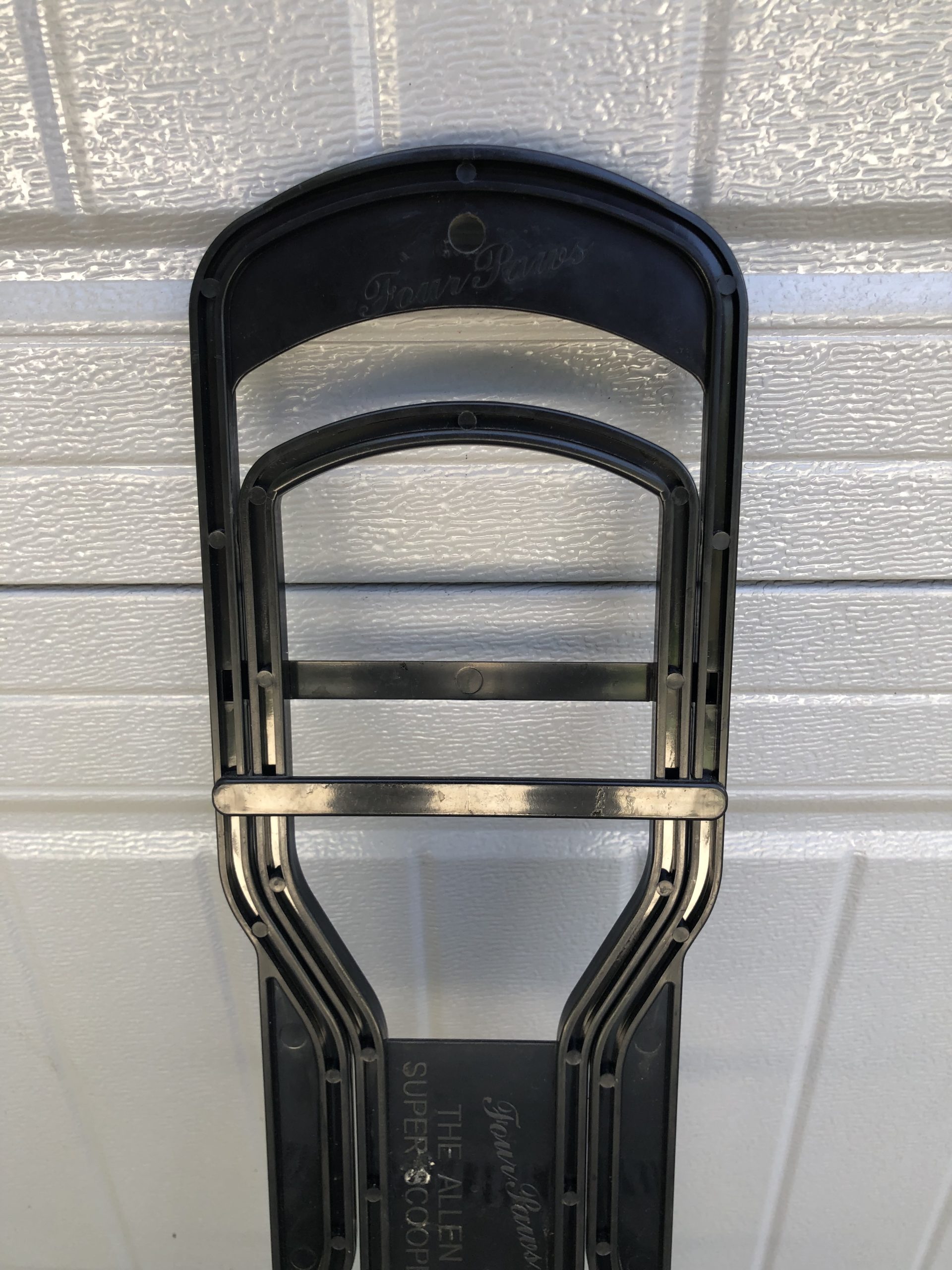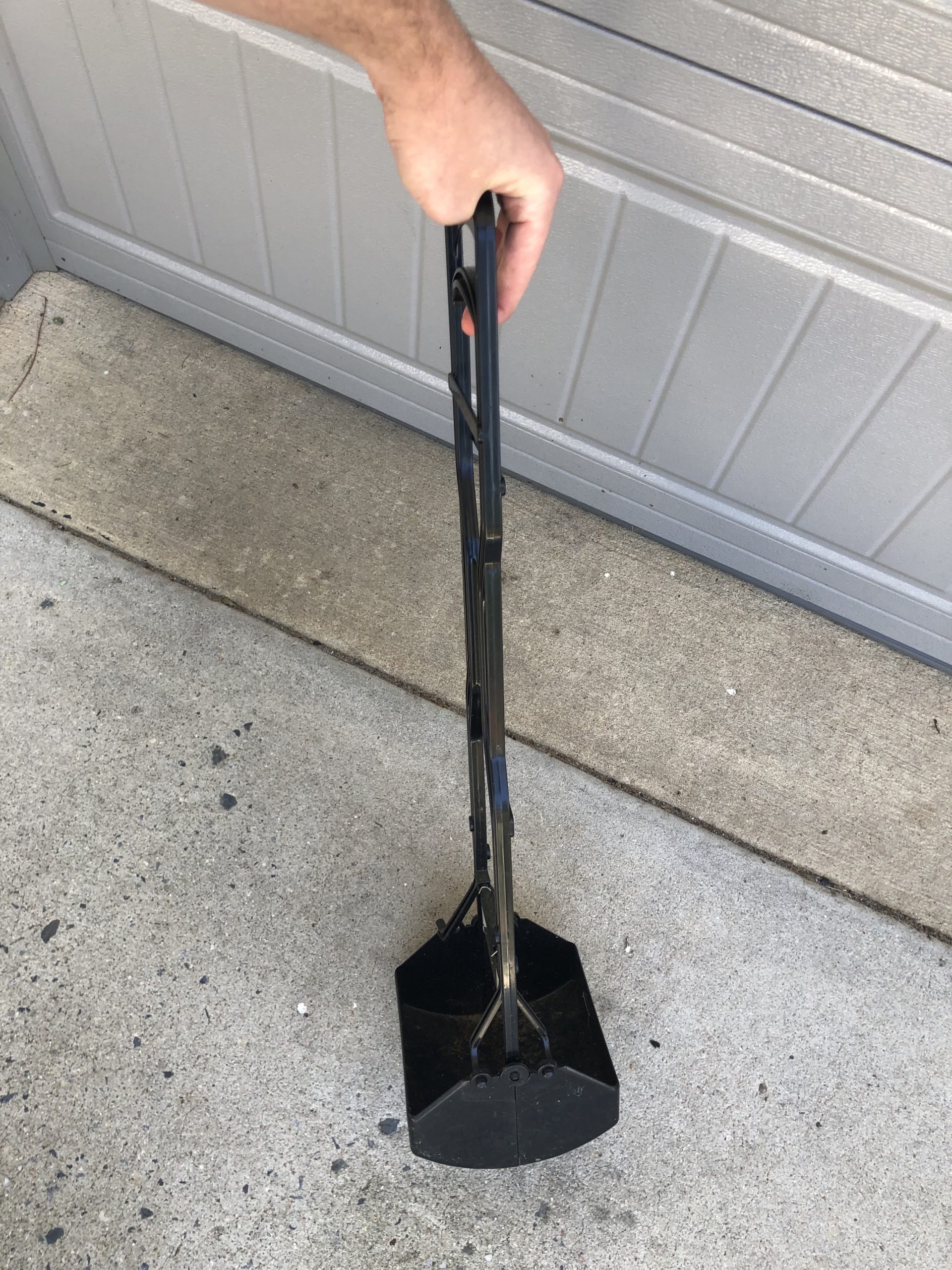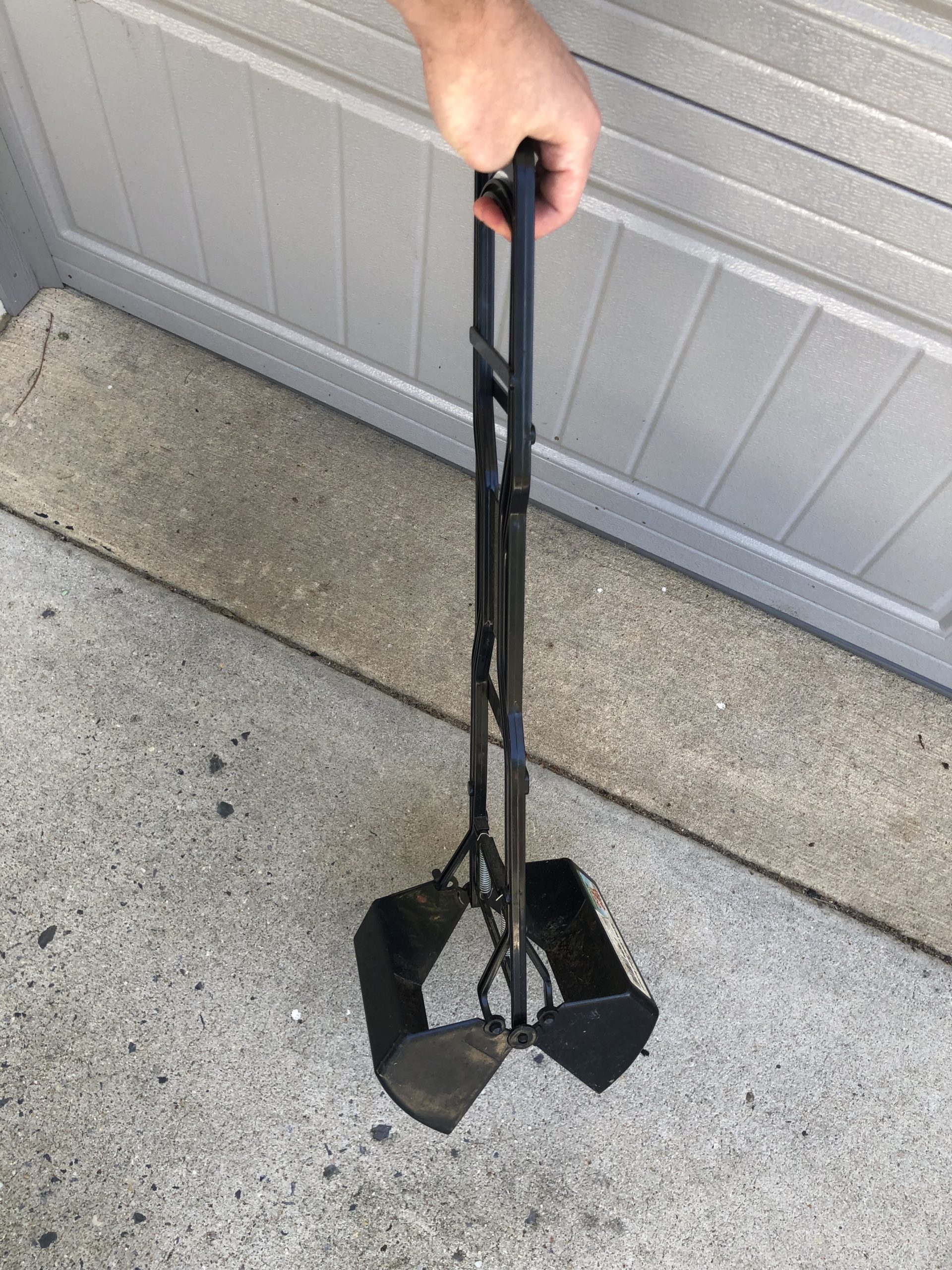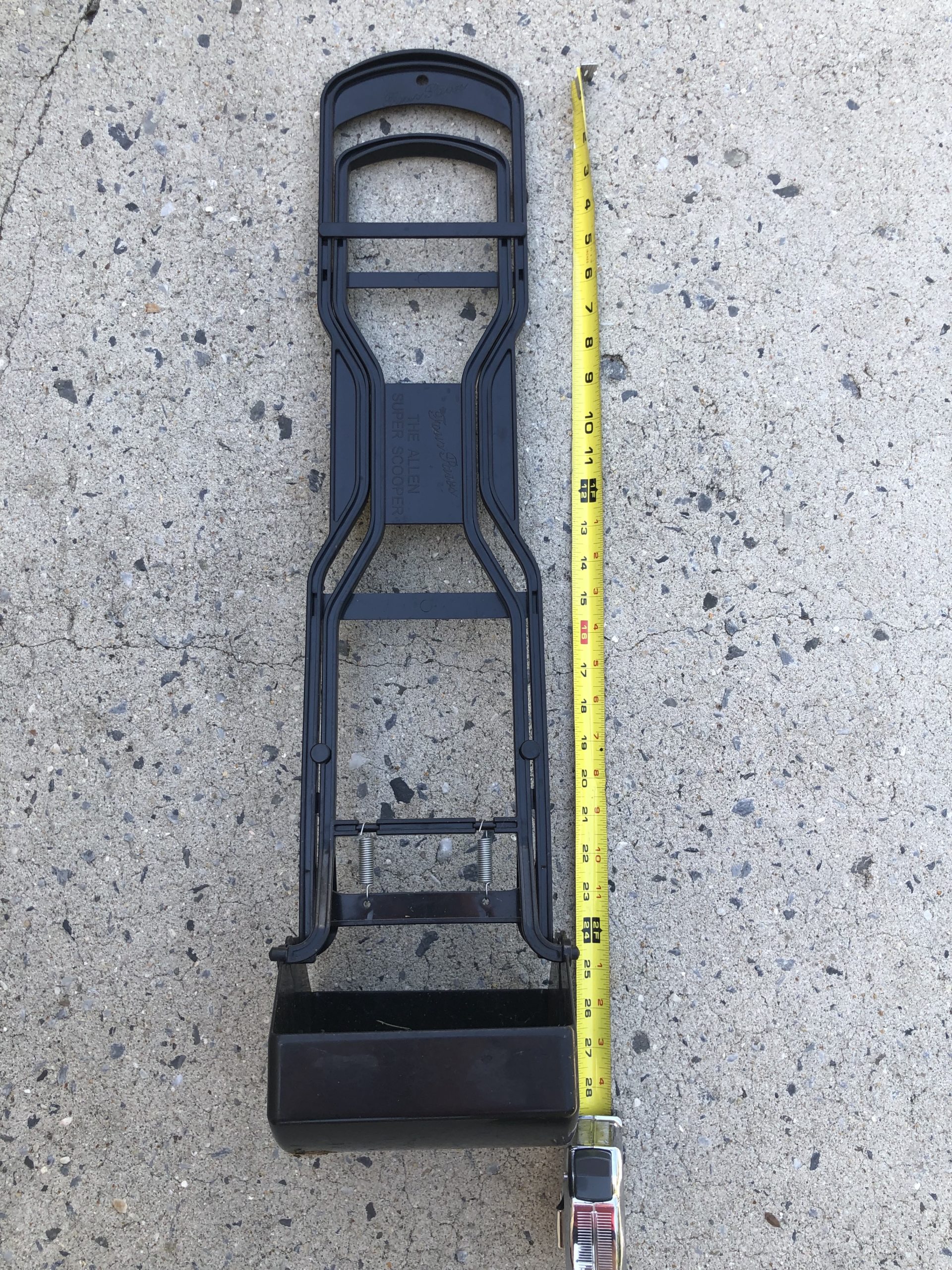A Brief History
For those of us who live with a dog, or dogs, we make sacrifices to ensure our canine companions have the best life. We buy their food, purchase the best beds, and forgive them when they rip apart our favorite throw pillows. Most of all, we sacrifice our dignity and swallow our pride to pick up their poop.
Sometimes it’s with a bag, a newspaper, or – if you want to be really environmentally conscious – your own hands. It’s our duty, and it’s the law according to the New York City Department of Sanitation, to keep our sidewalks clean by curbing our dogs. Fortunately, one device enhanced the way we clean up after completing their doodie – the pooper scooper.
Officially patented by Brooke D. Miller in 2001, (Miller), the ‘animal waste scooper’ became the tool of choice for all dog owners. Coincidentally, this invention directly improved the accessibility of pet care, sidewalk sanitation, and dog ownership! In this article, I will detail how the main features of the pooper scooper lowers the bar of effort for those with, and without, disabilities to take care of our furry friends’ feces.
Specific Product Features
The patent submitted by Miller details 20 patented pieces that make up the entire device, but there are four main aspects that are important to highlight first.
- The handle (see Fig. 1 in slideshow above)
- My pooper scooper’s handle has a slight curvature to account for palm and finger-tip placement.
- It includes a small hole at the top, affording the owner to hang it on a hook or nail in its storage space.
- The collection system (see Fig. 2 in slideshow above)
- Located at the end, it splits into two parts to ‘grab’ the poop from a lower surface and temporarily store it.
- Spring-loaded pressure mechanism (see Fig. 3-4 in slideshow above)
- The pooper scooper has a spring, pulley system that opens and closes the collection system.
- The pressure helps ensure no poop is missed or leaked through the collection system.
- The height (see Fig. 5 in slideshow above)
- The pooper scooper I own is over 2 feet long and affords me to pick up the poop without bending over.
- This feature possibly improves accessibility of pet ownership and sidewalk sanitation the most.
Models to View
Medical Model View of the Pooper Scooper’s Height
According to the Democracy Disability and Society Group (DDG), the medical model of disability “focuses o n the lack of physical, sensory or mental functioning and uses a clinical way of describing an individual’s disability.”
From this standpoint, we might consider a pooper scooper improves the compatibility and accessibility of dog ownership. In a way, this model could describe it as a tool to alleviate the effects of people with paraplegic disabilities, or those with arthritis. The height of a normal pooper scooper, including the one I own, affords collection without forcing the dog owner to bend down below their torso.
Through the medical model, it isn’t rare for medical professionals to recommend or prescribe treatments that aren’t technically pharmaceutical. Therefore, it’s possible that a pooper scooper could be requested for a doctor’s patient with paraplegic or arthritic disabilities.
Functional Solutions Model View of the Pooper Scooper’s Collection System
Similarly, the functional solutions model, which aims to curb limitations of those with disabilities through technology, can also be a way to view how the pooper scooper improves accessibility for pet care and ownership. I believe this model can specify how it enhances these aspects through usability and utility.
The collection system and the pressure mechanism afford users to pick up multiple messes quickly, effortlessly, and cleanly. Unlike a bag, or paper, or your hands, the pooper scooper’s design of pressurizing the mouth of the collection system limits the amount of effort the user has to exert. The collection system on its own keeps a lengthy separation between the excrement and the user’s skin.
Those with the arthritic and paraplegic disabilities can experience an improvement based on the lower effort it takes. If we consider those with obsessive-compulsive disorder (OCD), or agoraphobia, the separation of the excrement from the body could be an improvement to the experience based on the practice of cleanliness.
Social Model View of the Pooper Scooper
Although these past two models might describe how a pooper scooper enhances the accessibility of pet ownership, the social model of the tool could lead to some downsides – especially within the environment that it’s used. According to the DDG, the social model is a way to “understand…that disability is a problem of exclusion from ordinary life.”
Public parks are one of the greatest feats from urban design and city planning. It affords all walks of life, regardless of background, to experience the outdoors free of charge. On a typical day in Central Park, one can witness the overwhelmingly high number of park guests with dogs but there’s not one pooper scooper in sight.
One negative aspect of the pooper scooper in this model is its desirability in a park environment. It’s not the park that inhibits this, but the possible cognition of people. Handling a pooper scooper in public is awkward and sometimes messy. Even for people with paraplegic or arthritic disabilities who want to take their dog out in the park, the lack of pooper scoopers seen with their owners in this space could mean they’re less desirable in this environment.
It’s not any specific feature of the pooper scooper, it’s the tool itself that might lead to this. Parks are not built or organized to afford those with arthritic or paraplegic disabilities to clean up after their dogs. It might come from a lack of desirability from more capable individuals to refrain from bringing their pooper scoopers along.
References
Dog Laws. DSNY – the city of New York Department of Sanitation. (n.d.). Retrieved September 11, 2022, from https://www1.nyc.gov/assets/dsny/site/resources/streets-and-sidewalks-laws/dog-laws#:~:text=DSNY%20%2D%20Dog%20Laws&text=Each%20person%20who%20owns%20or,trash%20container%20or%20trash%20bag.
Medical model of disability. Medical Model of Disability – Taxi Driver Training Pack – Democracy Disability and Society Group. (n.d.). Retrieved September 11, 2022, from http://www.ddsg.org.uk/taxi/medical-model.html
Miller, B. D. (2001, March 6). Animal Waste Scooping And Disposal Device.
Social Model of disability. Social Model of Disability – Taxi Driver Training Pack – Democracy Disability and Society Group. (n.d.). Retrieved September 11, 2022, from http://www.ddsg.org.uk/taxi/social-model.html
